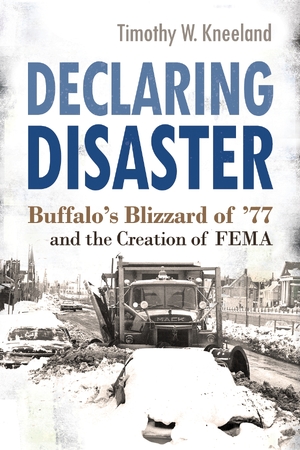"Lake Effect is an easy and pleasurable book for anybody interested in Great Lakes snow, whether the reader is simply a resident of the Northeast U.S. or a professional meteorologist."—The Geographical Review
"Lake Effect can answer any question the lay reader or scientist might have about the snows of the Great Lakes, while regaling both with tales of the life-threatening nature of the beast."—Technology and Culture
Description
Blending meteorological history with the history of scientific cartography, Monmonier charts the phenomenon of lake-effect snow and explores the societal impacts of extreme weather. Along the way, he introduces readers to natural philosophers who gradually identified this distinctive weather pattern, to tales of communities adapting to notoriously disruptive storms, and to some of the snowiest regions of the country.
Characterized by intense snowfalls lasting from a couple of minutes to several days, lake-effect snow is deposited by narrow bands of clouds formed when cold, dry arctic air passes over a large, relatively warm inland lake. With perhaps only half the water content of regular snow, lake snow is typically light, fluffy, and relatively easy to shovel. Intriguing stories of lake effect’s quirky behavior and diverse impacts include widespread ignorance of the phenomenon in the nineteenth and early twentieth centuries. Since then a network of systematic observers have collected several decades of data worth mapping, and reliable shortterm predictions based on satellites, Doppler radar, and computer models are now available.
Moving effortlessly from atmospheric science to anecdotes, Monmonier offers a richly detailed account of a type of weather that has long been misunderstood. Residents of lake-effect regions, history buffs, and weather junkies alike will relish this entertaining and informative book.
About the Author
Mark Monmonier is Distinguished Professor of Geography at Syracuse University. He is the author of fifteen books, including How to Lie with Maps; Air Apparent: How Meteorologists Learned to Map, Predict, and Dramatize Weather; Spying with Maps: Surveillance Technologies and the Future of Privacy; and Coast Lines: How Mapmakers Frame the World and Chart Environmental Change.
6 x 9, 260 pages, 14 black and white illustrations, 58 maps
September 2012




